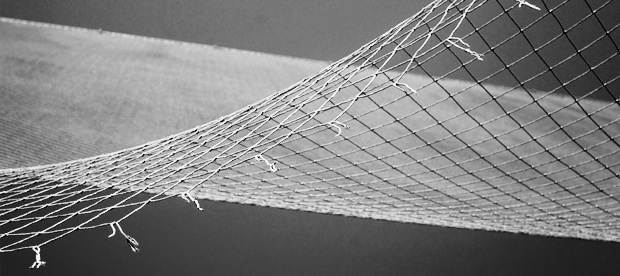According to a Bloomberg Business report in 2014, almost 1,750 spectators are hurt at baseball games every year by batted balls. After a string of high-profile foul ball and broken bat incidents this season, teams across all levels are faced with a dilemma. Do they extend safety netting down the baselines to protect fans (and if so, how far), or do they leave the netting as it has been for decades? Is there something in between that can be done to help protect the fans while not diminishing their experiences?
I’m in the camp that believes it’s time for baseball to mandate additional netting. As a baseball fan and a purist, this isn’t an easy decision. As far back as I can remember, I have very fond memories of sitting close to the action, asking for autographs and bringing my glove in anticipation of foul balls. But as a stadium manager, it’s an easier decision. As stadium managers, it’s our responsibility to keep fans safe. I think we can add netting in a manner that doesn’t adversely affect the fan experience while improving fan safety.
Net systems like Dyneema promise maximum protection with minimal visual obstruction and have been adopted by several Major League Baseball (MLB) stadiums already. Adding this system down the baselines could provide protection while not obstructing fan’s views like traditional netting. Additionally, MLB could look at retractable netting like the ones their National Football League counterparts use for field goals that would allow the netting to be lowered before and after the game and between innings so fans can still have that close interaction.
Ironically, netting may also actually increase the fan experience. A lot of fans aren’t willing to sit close to the action out of fear, nor can they afford the expensive close seats behind home plate that provide netting protection (fans pay a lot of money to sit behind that netting so perhaps it isn’t too obstructive). Increased netting would allow more fans the opportunity to sit closer to the action and also allow them to enjoy the game without feeling stressed or afraid with every swing of the bat. For example, we recently had long-time season ticket holders ask to move their seats behind our home plate netting for the upcoming season, saying they feel like they’ll be more relaxed watching the games.
Another important component of the fan experience is the ability for guests to interact with the team during the game. Teams are telling fans to use their smartphones more than ever—text us, tweet us, Snapchat us, order your food from your phone, and share with the world that you’re at the game! But only do so when a 100 mph hour foul ball might possibly not be coming in your direction. Protective netting could actually allow for more of this in-game experience without fans having to keep their heads on swivels.
If we choose to add netting, the next question is how far the netting should extend, considering every ballpark has different sizes, shapes, and dimensions. According to Edwin Comber of the website www.foulballz.com, the most dangerous areas for foul balls are between the home plate netting and the end of the dugout. At Blair Field, we’ve come up with a few different ideas based on our stadium’s configuration, and most stadium managers know their ballparks’ nooks and crannies well enough to determine what provides optimal safety. MLB is also studying the variations in ballpark design that could affect netting and where balls enter the stands most often. These studies should help answer how far to extend the netting. However, if netting is at least required to extend to the end of the dugout, it would seemingly reduce many potential serious injuries.
Extra netting isn’t perfect and won’t stop every ball from entering the stands, but it will help. As stadium managers, it’s our goal to provide fans with a safe and enjoyable experience. I believe that protective netting can improve safety while not diminishing that enjoyable experience (and perhaps even enhancing it!). Baseball purists and fans who are against extra netting need not look back too far to find a time when processes changed and fans adjusted just fine. Walkthrough metal detectors were recently mandated for fans safety and many ballparks have found a way to make the entry process just as quick and efficient as before. Protective netting can turn out the same. Hopefully, after some likely initial pushback, most fans won’t even recognize the change, except for those fans that can have a safer and more enjoyable experience at the ballpark.
(Image: wBKRw/Creative Commons)

